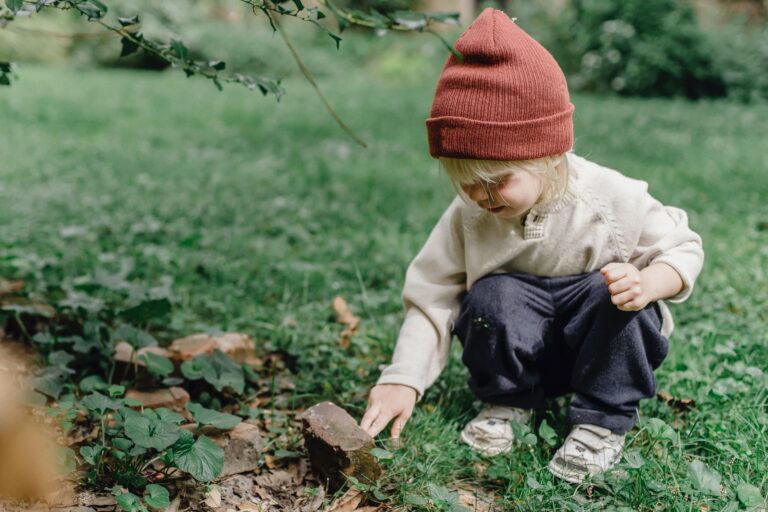How to Engage Children in Nature Conservation

As a parent of two young children, I feel a responsibility to help them establish a meaningful connection with nature. I want to surround them with all the beauty and joy that our planet has to offer and, by doing so, develop within them a desire to protect and nurture it. By demonstrating my own enthusiasm for nature, it’s only natural that my own children’s interest has been sparked.
I believe that even small habits incorporated into our daily routines can aid nature conservation. On the face of it, today’s hectic lifestyles don’t lend themselves to interacting with nature – but is this necessarily the case? Many of us can be guilty at times of jumping into the car to get somewhere that is within walking distance, whether it be to save time, or we simply can’t be bothered to walk. It’s no secret that car pollution is a huge problem so, if possible, we should walk our children to school/nursery. You might be surprised at the ease with which you can infuse your journey with nature. We love exploring the changing seasons by collecting fallen leaves, conkers and acorns to create autumn collages; taking notice of the bright, colourful flowers as they burst into bloom and identifying all the different birds and insects we spot.
Feeding the birds is something I’ve done for many years, and my children love to help me. Not only is it part of our routine, it’s also a sensory experience for them. My daughter, especially, loves to run the seeds and various birdy nibbles through her fingers. They also enjoy being very hands-on with gardening by digging holes, planting seeds and watering the plants and flowers. This summer, we planted a crab apple tree so the children can watch it develop from a sapling into a fully grown tree. The hope is, that it’ll be beautifully clothed in blossom in the spring and laden with apples in the autumn, attracting, amongst other things, bees, birds and bugs – allowing the children to witness biodiversity in action and the pleasure that it brings.
I get my children out and about as often as possible – making the most of local beauty spots and, when time (and energy) allows, exploring further afield. I teach them that outside is a shared space – and although it is to be enjoyed, we must treat the surroundings and its wildlife, as well as fellow humans, with respect. I explain the consequences of dropping litter and disturbing habitats, so they understand why their actions and behaviour matter.
Around the house, I am working on instilling in the children small habits such as turning off lights when leaving a room to save electricity; as temperatures begin to fall, closing doors to keep in the heat; turning off taps whilst brushing teeth, etc. All these little actions may seem inconsequential but, if everyone were more mindful of them, they would make a significant impact. As my son approaches five, I have intentionally opened up the conversation to talk about why we need to be thoughtful and not wasteful, and the importance of giving nature a helping hand.
Gradually weaving these habit shifts into our daily routine benefits not only the environment, but us as humans. Choosing to walk instead of drive improves our physical and mental health. It also gives us the gift of time – time to talk and just be with each other as we stroll along. Gardening creates beautiful surroundings for us to enjoy; it is also one of many activities, including collecting seasonal treasures, and visiting country parks and reserves, that can imbue children with a love of nature conservation. By taking a step back, we allow ourselves the space to recognise that everything goes hand in hand. As we join each dot, the bigger picture of nature conservation and its importance will become ever clearer.

Responses